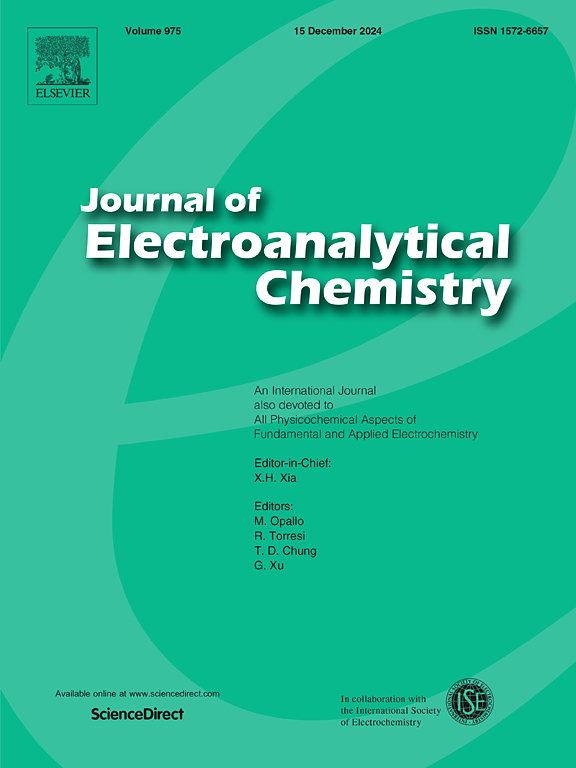Computing the inverse Butler–Volmer relationship
IF 4.1
3区 化学
Q1 CHEMISTRY, ANALYTICAL
引用次数: 0
Abstract
A detailed discussion is presented, of the problem of computing the inverse Butler-Volmer (electrode potential vs. current) relationship efficiently and with a high accuracy. A number of limiting cases of this problem is identified, and approximations valid for these cases are deduced. A hybrid algorithm is constructed, that combines the various approximations and improves them by Newton iterations. The algorithm is implemented in C++, employing extended precision variables. It is found that the modulus of the relative error of the calculated electrode potential is predominantly close to ca. and locally increases to ca. . However, there are also well defined and unavoidable (albeit rather unlikely from the physical point of view) special situations in which the relative error may approach 100%, independently of the numerical algorithm used. The C++ code elaborated is made available. The code can be used for simulations of controlled current experiments, and for the analysis of diverse experimental data in electroanalytical and electrochemical engineering studies. An example application of the code, to the calculation of chronopotentiograms for a quasi-reversible charge transfer at a planar electrode, is also presented.
计算逆巴特勒-沃尔默关系
详细讨论了高效、高精度地计算反巴特勒-沃尔默(电极电位与电流)关系的问题。找出了这一问题的若干极限情况,并推导了这些情况的有效近似。构造了一种混合算法,该算法结合了各种近似,并通过牛顿迭代对其进行改进。该算法是用c++语言实现的,采用扩展精度变量。计算得到的电极电位相对误差模量主要接近10 ~ 18,局部增大到10 ~ 15。然而,也有明确的和不可避免的(尽管从物理角度来看不大可能)特殊情况,其中相对误差可能接近100%,与所使用的数值算法无关。详细编写的c++代码是可用的。该代码可用于控制电流实验的模拟,以及电分析和电化学工程研究中各种实验数据的分析。本文还介绍了该代码在平面电极准可逆电荷转移时电位图计算中的应用实例。
本文章由计算机程序翻译,如有差异,请以英文原文为准。
求助全文
约1分钟内获得全文
求助全文
来源期刊
CiteScore
7.80
自引率
6.70%
发文量
912
审稿时长
2.4 months
期刊介绍:
The Journal of Electroanalytical Chemistry is the foremost international journal devoted to the interdisciplinary subject of electrochemistry in all its aspects, theoretical as well as applied.
Electrochemistry is a wide ranging area that is in a state of continuous evolution. Rather than compiling a long list of topics covered by the Journal, the editors would like to draw particular attention to the key issues of novelty, topicality and quality. Papers should present new and interesting electrochemical science in a way that is accessible to the reader. The presentation and discussion should be at a level that is consistent with the international status of the Journal. Reports describing the application of well-established techniques to problems that are essentially technical will not be accepted. Similarly, papers that report observations but fail to provide adequate interpretation will be rejected by the Editors. Papers dealing with technical electrochemistry should be submitted to other specialist journals unless the authors can show that their work provides substantially new insights into electrochemical processes.

 求助内容:
求助内容: 应助结果提醒方式:
应助结果提醒方式:


